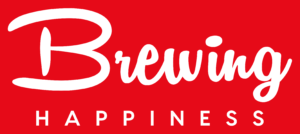In a world that thrives on instant messages, notifications, and screen time, the concept of digital wellness is no longer a luxury—it’s a necessity. From sunrise to the moment we close our eyes at night, we’re swimming in a sea of apps, emails, and content. Yet, amid the chaos, there’s a quiet movement: people choosing tech tools not to consume more, but to live more consciously. Welcome to the age of online balance.
Let’s explore the digital tools that aren’t just “more tech,” but are thoughtfully designed to support a connected lifestyle—without hijacking your time, focus, or peace of mind.
What Is Digital Wellness, Really?
It’s not about tossing your phone in a drawer and disappearing into the woods. Digital wellness is the art of using technology intentionally. It’s about choosing tools that serve you, not the other way around.
A study by the American Psychological Association in 2023 revealed that 81% of adults felt they needed to take steps to reduce screen time. More tellingly, 63% said they felt “mentally drained” after spending hours online, even when it wasn’t work-related. The message is clear: we crave balance.
Digital minimalism plays a huge role here. It’s not anti-tech—it’s pro-intention.
1. Calendar Apps with Purpose: More Than Just Scheduling
Most people think of calendars as productivity tools. Fair enough. But certain digital calendars—like TimeTree or Notion’s built-in planner—are designed to bring people together, not just remind them of meetings.
Want to share family plans? Coordinate community projects? Block out “screen-free” hours? These calendars do more than schedule. They structure your time around your values. That’s a subtle but powerful shift.
Some even allow color-coded segments that visually reinforce balance: work (blue), personal time (green), offline hours (gray). A reminder that your life is more than Zoom calls and deadline alerts.
2. Mindfulness & Meditation Apps That Actually Work
It’s easy to laugh off meditation apps as digital distractions disguised as solutions. But some are surprisingly effective. Insight Timer, for example, has over 25 million users and offers not just guided meditations but full courses, breathwork, ambient soundscapes, and progress trackers—all without pushing for constant engagement.
The key difference? No gamification. No “streaks.” Just tools to help you disconnect to reconnect.
Even 10 minutes a day has shown benefits: a Harvard study found mindfulness practice reduced anxiety by 30% in regular users. That’s not theory—it’s chemistry. Calm brain, focused mind.
3. Communication Tools That Respect Boundaries
A connected lifestyle doesn’t mean always being online. In fact, it often means the opposite.
Apps like Marco Polo or Signal let you stay in touch without the instant pressure of reply culture. You record when you want, listen when you can. It’s asynchronous communication designed for real life.
Similarly, features like “focus mode” on Android or “Do Not Disturb” on iOS are your allies, not obstacles. Used properly, they build walls where you need them and open doors when it matters.
Ask yourself: Is this tool helping me connect or simply keeping me reactive? The answer shapes your entire digital rhythm. It is also worth considering whether you feel calm on the Internet or some anxiety about your data. If the latter, it makes sense to install VeePN for PC or another device. This way you can protect your privacy from bots, hackers and other interested parties.
4. Digital Journals & Mood Trackers: The Quiet Helpers
You may not think of a journaling app as a major life-changer. But in practice, it can become a mirror. Apps like Daylio or Reflectly allow users to log thoughts, tag moods, and spot patterns over time.
When used consistently, they highlight the relationship between screen habits and emotional states. Feeling drained every Sunday night? Maybe you’re over-consuming social media on weekends. Mood tracking reveals what your calendar cannot.
Data from Daylio shows that users who tracked daily for 3 months saw a 42% improvement in mood consistency. That’s not just documentation—it’s self-awareness in action.
5. Read-It-Later Tools: Because Information Overload Is Real
You don’t have to read everything now. In fact, trying to do so is a big reason people feel digitally burned out. Enter minimalist apps like Pocket or Instapaper—designed to help you curate what matters and discard what doesn’t.
Here’s the genius: you’re no longer grazing through doomscrolls. Instead, you’re intentionally choosing what to consume. Information becomes a resource, not a weight.
Also, reading offline reduces exposure to ads, pop-ups, and algorithms. One less digital tug-of-war.
6. Smart Home Integrations That Simplify, Not Complicate
It might sound ironic, but the right smart tools can reduce decision fatigue. Think sunrise alarm clocks that align with your circadian rhythm or voice assistants set to auto-activate a “wind-down” mode: soft lighting, low music, phone notifications muted.
The trick is setting firm parameters. If your smart device constantly suggests more tech, it’s not working for you—it’s working against your balance.
Use automation to create rhythm, not chaos. But also remember to protect your data. Smart home devices are a risk zone, as they collect data, but usually do not have proper protection. If privacy and security are important to you, use VeePN router add-on. This will encrypt your data and hide it from strangers.
The Power of Subtraction in a Tech-Heavy World
Sometimes, the best digital tool is the one you delete.
That extra social app? That notification-heavy fitness tracker? They might look like helpers, but in truth, they’re often distractions. The average user has 80 apps installed but uses only 9 per day, according to data from Simform (2024).
What if we flipped the model? Keep only what nourishes your mind, time, or relationships. Let the rest go.
Final Thoughts: Your Lifestyle, Your Terms
Living a connected lifestyle doesn’t mean being digitally available 24/7. It means being intentionally engaged. The best tech tools aren’t loud. They don’t buzz for attention. They support routines, encourage pauses, and make life feel more lived—not just streamed or scheduled.
Find your balance not by rejecting technology, but by curating it. Your peace of mind is a setting. Choose it. Daily.




